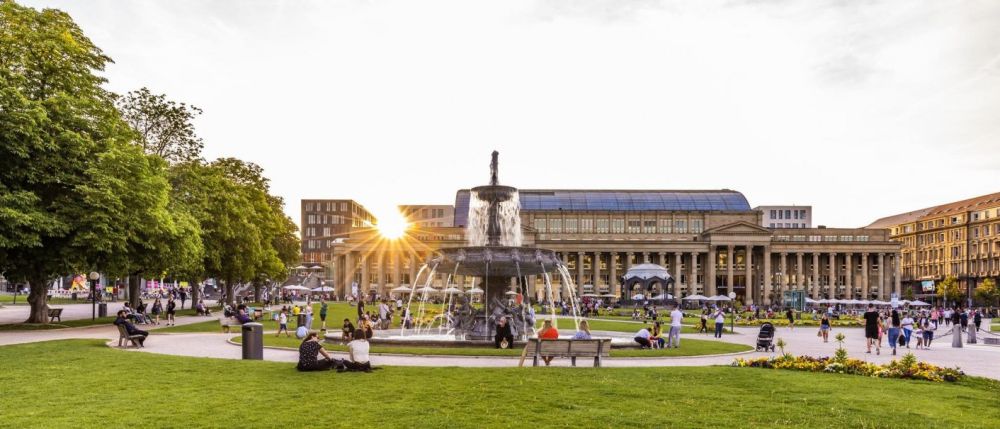

The vibrant history of tourism in Stuttgart’s majestic central square, Schlossplatz, dates back to the period when the area was characterized by palatial architecture and royal gardens. The main attraction, the New Palace (Neues Schloss), which borders Schlossplatz, was completed in 1807 and has long served as a magnet for tourists due to its grand Baroque architecture. During the 19th century, it became a popular spot for the elite and marked the beginning of Stuttgart's rise as a tourist destination.
Following the destruction during World War II, Stuttgart underwent extensive reconstruction, and Schlossplatz was transformed once again into a bustling public space. It was during the post-war era that tourism began to flourish anew, with Schlossplatz acting as a focal point for cultural and public events. The square's proximity to significant landmarks such as the Old Castle (Altes Schloss) and the Staatstheater contributed to its appeal.
In the modern era, Schlossplatz has remained at the forefront of Stuttgart's tourism industry. The square is frequently used for major events like the Stuttgart Christmas Market and the Stuttgart Summer Festival, drawing visitors from all corners of the globe. Furthermore, it has become a central point for those venturing to the nearby shopping streets Königstraße and Schloßstraße, offering a blend of historical discovery and contemporary retail therapy.
The latest trend in Schlossplatz tourism is the increasing emphasis on sustainable travel and eco-friendly activities. Visitors are now able to enjoy the green spaces of Schlossplatz, like the splendid Schlossgarten, without leaving a large carbon footprint. Mobility within the area is enhanced through the use of eco-friendly transportation options, including bike-sharing programs and electric scooters.
Technological advancements have also influenced tourism in Schlossplatz. Augmented reality applications allow tourists to visualize historical events and the former grandeur of the square. The integration of digital guides and mobile apps has enhanced the visitor experience, providing interactive maps and detailed information on the cultural heritage of Schlossplatz at one’s fingertips.
In terms of cultural tourism, Schlossplatz continues to see a rise in popularity due to its vast array of festivals and events, which often celebrate local Swabian traditions and international connections alike. There's a growing trend for experiential and immersive events where tourists can actively participate and engage with the local culture.
Lastly, with the growing foodie culture around the world, culinary tourism in Stuttgart has found a bustling hub in Schlossplatz. Restaurants and food stalls around the area offer traditional Swabian delicacies, such as Spätzle and Maultaschen, allowing tourists to indulge in the local cuisine while enjoying the impressive backdrop of historic monuments.
Schlossplatz in Stuttgart has evolved to become a place where history, culture, shopping, and modern amenities converge, offering tourists a comprehensive and enjoyable experience. The continuous development of sustainable tourism practices and technological integration sets the stage for a forward-looking, yet deeply historical, tourist destination. Whether it’s exploring the grand architectures of the past or enjoying contemporary festivities, Schlossplatz remains a testament to Stuttgart’s commitment to celebrating its heritage whilst advancing towards the future of tourism.